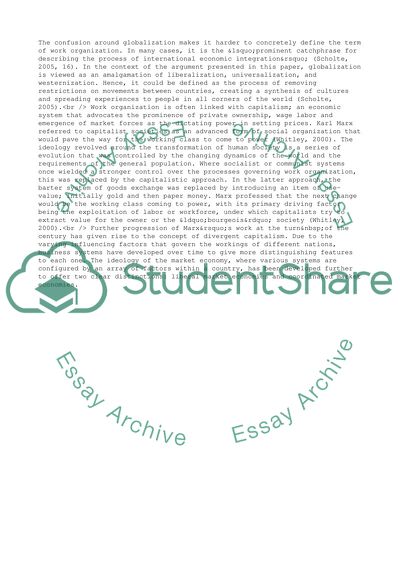Cite this document
(Forms of Work Organization Literature review Example | Topics and Well Written Essays - 1750 words, n.d.)
Forms of Work Organization Literature review Example | Topics and Well Written Essays - 1750 words. Retrieved from https://studentshare.org/management/1566346-using-current-and-historical-examples-discuss-the-constraints-and-opportunities-for-alternative-forms-of-work-organisation-in-the-globalized-world
Forms of Work Organization Literature review Example | Topics and Well Written Essays - 1750 words. Retrieved from https://studentshare.org/management/1566346-using-current-and-historical-examples-discuss-the-constraints-and-opportunities-for-alternative-forms-of-work-organisation-in-the-globalized-world
(Forms of Work Organization Literature Review Example | Topics and Well Written Essays - 1750 Words)
Forms of Work Organization Literature Review Example | Topics and Well Written Essays - 1750 Words. https://studentshare.org/management/1566346-using-current-and-historical-examples-discuss-the-constraints-and-opportunities-for-alternative-forms-of-work-organisation-in-the-globalized-world.
Forms of Work Organization Literature Review Example | Topics and Well Written Essays - 1750 Words. https://studentshare.org/management/1566346-using-current-and-historical-examples-discuss-the-constraints-and-opportunities-for-alternative-forms-of-work-organisation-in-the-globalized-world.
“Forms of Work Organization Literature Review Example | Topics and Well Written Essays - 1750 Words”. https://studentshare.org/management/1566346-using-current-and-historical-examples-discuss-the-constraints-and-opportunities-for-alternative-forms-of-work-organisation-in-the-globalized-world.


